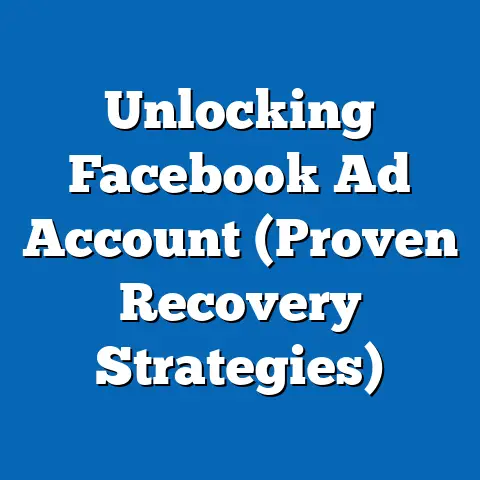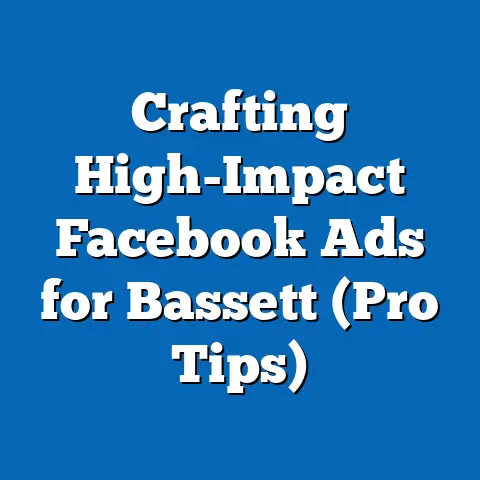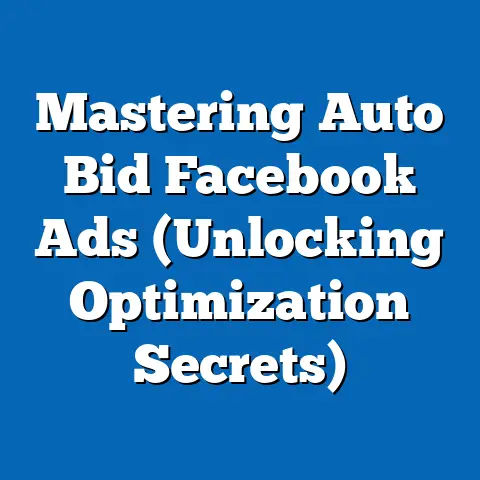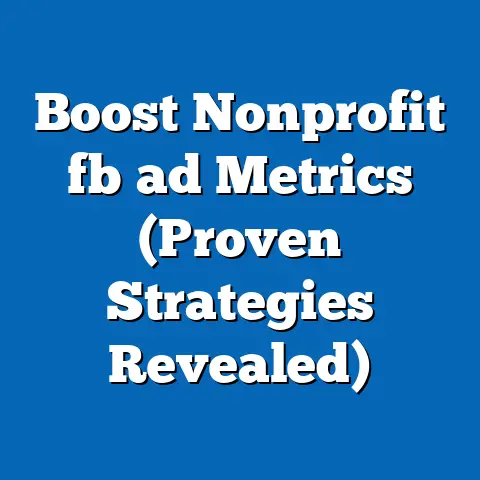Maximize Facebook Ads in Alicante (Proven Strategies)
Maximize Facebook Ads in Alicante: Proven Strategies for Success
I’ve spent years helping businesses navigate the ever-changing landscape of Facebook advertising, and one thing remains constant: the power of customization. Facebook Ads aren’t a one-size-fits-all solution. What works in New York City won’t necessarily resonate in Alicante, Spain. This article is your guide to unlocking the full potential of Facebook Ads specifically within the vibrant Alicante region. I’ll walk you through the nuances of localizing your campaigns, targeting the right audiences, crafting compelling content, optimizing your budget, and analyzing your results. Think of this as your personalized roadmap to Facebook Ads success in Alicante, designed to help you connect with your ideal customers and achieve your business goals. We’ll dive into everything from understanding the unique demographics of Alicante to leveraging the power of the Facebook Pixel for retargeting. Let’s get started!
Understanding Your Audience in Alicante
Audience research is the bedrock of any successful Facebook Ads campaign, and it’s especially crucial when targeting a specific geographic area like Alicante. You can’t just assume that general marketing principles will apply. You need to understand the local culture, demographics, and online behaviors of your target audience.
Alicante, a beautiful coastal city in Spain, boasts a diverse population with a rich history and unique cultural identity. Understanding this diversity is paramount. According to recent data, Alicante’s population is a blend of locals, expats (particularly from the UK and Northern Europe), and tourists. Each group has its own set of interests, needs, and online habits.
For example, if you’re targeting younger residents, you might focus on mobile-first ad formats and engaging video content. If you’re aiming for the expat community, you might need to tailor your language and messaging to resonate with their cultural backgrounds. And if you’re trying to attract tourists, you’ll want to highlight the unique attractions and experiences that Alicante has to offer.
Gathering Audience Insights
Facebook Audience Insights is a powerful tool for gathering demographic data, interests, and behaviors of your target audience. I’ve used it countless times to refine my targeting and improve ad performance. You can filter by location, age, gender, interests, and more to uncover valuable insights about your potential customers in Alicante.
Beyond Facebook Audience Insights, consider conducting surveys and market research to gather more granular data. Talk to your existing customers, ask for feedback, and try to understand their motivations and pain points. You can also analyze social media conversations and online forums to identify trending topics and interests within the Alicante community.
Example: Let’s say you own a surf shop in Alicante. You could use Facebook Audience Insights to identify people in Alicante who are interested in surfing, water sports, or outdoor activities. You could also target people who have liked pages related to surfing brands or surf schools. By combining this data with your own customer insights, you can create highly targeted ad campaigns that resonate with your ideal customers.
Case Studies: Successful Campaigns in Alicante
I’ve seen many successful campaigns in Alicante that have leveraged local audience insights to achieve impressive results. One example that stands out is a local restaurant that used Facebook Ads to promote a special paella night. They targeted people in Alicante who were interested in Spanish cuisine, local culture, and dining out. They also used location-based targeting to ensure that their ads were only shown to people within a certain radius of the restaurant. The campaign was a huge success, resulting in a significant increase in reservations and revenue.
Key Takeaway: Don’t underestimate the power of audience research. The more you understand your target audience in Alicante, the more effective your Facebook Ads will be. Use a combination of Facebook Audience Insights, surveys, and market research to gather valuable data and refine your targeting.
Next Steps:
- Use Facebook Audience Insights to research the demographics, interests, and behaviors of your target audience in Alicante.
- Conduct surveys and market research to gather more granular data about your potential customers.
- Analyze social media conversations and online forums to identify trending topics and interests within the Alicante community.
Crafting Compelling Ad Content
Once you understand your audience, the next step is to create compelling ad content that resonates with them. This means crafting visuals, copy, and calls-to-action that capture their attention and motivate them to take action. I’ve learned that the best ads are those that speak directly to the needs and desires of the target audience, using language and imagery that they can relate to.
The Importance of Local Culture and Language
In Alicante, like any other region, local culture and language play a significant role in shaping consumer behavior. It’s essential to adapt your ad messaging to resonate with the local audience, using language that is both culturally sensitive and linguistically accurate. I always recommend using native speakers to translate and adapt your ad copy to ensure that it sounds natural and authentic.
Visuals are just as important as the written word. Use images and videos that reflect the local culture and lifestyle. For example, if you’re promoting a tourism business, use images of Alicante’s stunning beaches, historic landmarks, and vibrant festivals. If you’re targeting local residents, use images of people enjoying everyday life in Alicante.
Example: I worked with a local real estate agency that was struggling to generate leads through their Facebook Ads. Their ads featured generic images of houses that could have been located anywhere in the world. I suggested that they use images of properties that were specifically located in Alicante, showcasing the city’s unique architecture and stunning views. I also recommended that they use ad copy that highlighted the benefits of living in Alicante, such as the Mediterranean climate, the vibrant culture, and the affordable cost of living. The results were dramatic. The real estate agency saw a significant increase in leads and sales.
Tips on A/B Testing
A/B testing is a crucial part of optimizing your ad content. It involves creating multiple versions of your ad and testing them against each other to see which one performs best. I always recommend testing different headlines, images, calls-to-action, and ad formats to see what resonates most with your target audience.
Facebook Ads Manager makes it easy to run A/B tests. You can create multiple ad variations and split your budget evenly between them. The platform will then track the performance of each ad and show you which one is generating the best results.
Example: Let’s say you’re running a Facebook Ad campaign to promote a new product. You could create two different versions of your ad, one with a long headline that explains the benefits of the product in detail, and another with a short, punchy headline that focuses on the product’s key features. You could then run an A/B test to see which headline generates the most clicks and conversions.
Compelling Ad Copy and Creative Visuals
Here are some examples of compelling ad copy and creative visuals that have proven successful in the Alicante market:
Next Steps:
- Use native speakers to translate and adapt your ad copy to ensure that it sounds natural and authentic.
- Use images and videos that reflect the local culture and lifestyle of Alicante.
- Run A/B tests to optimize your ad content and improve engagement rates.
Choosing the Right Ad Formats
Facebook offers a variety of ad formats, each with its own unique strengths and weaknesses. Choosing the right ad format is crucial for maximizing the effectiveness of your campaigns. I’ve found that some ad formats tend to perform better than others in certain markets, depending on the target audience, the product or service being advertised, and the overall marketing goals.
Different Ad Formats Available
Here’s a brief overview of the most popular ad formats on Facebook:
- Image Ads: These are simple ads that feature a single image and a short text description. They’re a good option for showcasing products or services in a visually appealing way.
- Video Ads: These ads feature a video that can be up to 240 minutes long. They’re a great way to tell a story, demonstrate a product, or engage with your audience on a more personal level.
- Carousel Ads: These ads feature multiple images or videos that users can scroll through. They’re a good option for showcasing a range of products or services, or for telling a story in a sequential format.
- Collection Ads: These ads are designed for e-commerce businesses. They feature a cover image or video, followed by a collection of products that users can browse and purchase directly from the ad.
- Instant Experience Ads: These ads are full-screen, mobile-optimized experiences that load instantly when users click on them. They’re a great way to create immersive and engaging ad experiences.
Which Formats Perform Best in Alicante?
In Alicante, I’ve found that video ads tend to perform particularly well. This is likely due to the fact that Alicante is a popular tourist destination, and video ads are a great way to showcase the city’s beauty and attractions. Carousel ads are also a good option for businesses that offer a range of products or services.
Example: A local hotel used video ads to showcase its stunning beachfront location, luxurious amenities, and friendly staff. The ads were targeted to people in the UK and Germany who were interested in vacationing in Spain. The campaign was a huge success, resulting in a significant increase in bookings.
Examples of Successful Ad Format Usage
Here are some examples of businesses in Alicante that have successfully utilized different ad formats to achieve their marketing goals:
- A local restaurant: Used carousel ads to showcase its menu items and promote special offers.
- A tourism business: Used video ads to showcase Alicante’s stunning beaches, historic landmarks, and vibrant culture.
- A real estate agency: Used image ads to showcase properties that were specifically located in Alicante, highlighting the city’s unique architecture and stunning views.
Key Takeaway: Choosing the right ad format is crucial for maximizing the effectiveness of your Facebook Ads campaigns. Consider your target audience, the product or service being advertised, and your overall marketing goals when selecting an ad format.
Next Steps:
- Experiment with different ad formats to see which ones perform best in your market.
- Use video ads to showcase your products or services in a visually appealing way.
- Use carousel ads to showcase a range of products or services, or to tell a story in a sequential format.
Budget Optimization Strategies
Effective budget management is critical for maximizing your return on investment (ROI) with Facebook Ads. It’s not just about spending money; it’s about spending it wisely. I’ve seen too many businesses waste their ad budgets on poorly targeted campaigns or ineffective ad content.
Budgeting Options Available
Facebook offers two main budgeting options:
- Daily Budgets: This allows you to set a specific amount of money that you’re willing to spend each day on your ads.
- Lifetime Budgets: This allows you to set a total amount of money that you’re willing to spend on your ads over the entire duration of the campaign.
I generally recommend using daily budgets for ongoing campaigns, as it allows you to monitor your spending and make adjustments as needed. Lifetime budgets are a good option for campaigns that have a specific start and end date, such as a promotional event or a seasonal sale.
Setting Clear Objectives and KPIs
Before you set your budget, it’s essential to define your marketing objectives and identify the key performance indicators (KPIs) that you’ll use to measure your success. What are you trying to achieve with your Facebook Ads campaigns? Are you trying to generate leads, increase sales, drive traffic to your website, or build brand awareness?
Once you’ve defined your objectives, you can set realistic KPIs and allocate your budget accordingly. For example, if your objective is to generate leads, you might track metrics such as cost per lead (CPL) and lead conversion rate. If your objective is to increase sales, you might track metrics such as cost per acquisition (CPA) and return on ad spend (ROAS).
Proven Strategies for Optimizing Ad Spend
Here are some proven strategies for optimizing your ad spend on Facebook:
- Use Facebook Pixel for Retargeting: The Facebook Pixel is a small piece of code that you can install on your website to track user behavior. This allows you to retarget people who have visited your website with relevant ads. Retargeting is a highly effective way to increase conversions and improve your ROI.
- Employ Lookalike Audiences: Lookalike audiences are audiences that are similar to your existing customers. Facebook can create lookalike audiences based on your customer list, your website visitors, or your Facebook page fans. Lookalike audiences are a great way to reach new customers who are likely to be interested in your products or services.
- Test Different Bidding Strategies: Facebook offers a variety of bidding strategies, including cost per click (CPC), cost per impression (CPM), and cost per action (CPA). Experiment with different bidding strategies to see which one works best for your campaigns.
- Monitor and Adjust Budgets: Regularly monitor your ad performance and adjust your budgets based on the results. If you’re seeing good results with a particular campaign, you might want to increase your budget. If you’re not seeing the results you want, you might want to decrease your budget or try a different targeting strategy.
Key Takeaway: Effective budget management is essential for maximizing your ROI with Facebook Ads. Set clear objectives and KPIs, use Facebook Pixel for retargeting, employ lookalike audiences, test different bidding strategies, and monitor and adjust your budgets regularly.
Next Steps:
- Define your marketing objectives and identify the KPIs that you’ll use to measure your success.
- Install the Facebook Pixel on your website to track user behavior.
- Create lookalike audiences based on your customer list, your website visitors, or your Facebook page fans.
- Experiment with different bidding strategies to see which one works best for your campaigns.
Analyzing and Improving Ad Performance
The final piece of the puzzle is analyzing your ad performance and making data-driven decisions to improve your results. I always tell my clients that Facebook Ads is an iterative process. You can’t just set up your campaigns and forget about them. You need to constantly monitor your performance, identify areas for improvement, and make adjustments to your targeting, ad content, and budget.
Key Metrics to Track
Here are some of the key metrics that you should be tracking for your Facebook Ads campaigns:
- Reach: The number of people who saw your ads.
- Impressions: The number of times your ads were displayed.
- Engagement: The number of likes, comments, shares, and clicks your ads received.
- Click-Through Rate (CTR): The percentage of people who clicked on your ads after seeing them.
- Conversion Rate: The percentage of people who completed a desired action (e.g., made a purchase, filled out a form) after clicking on your ads.
- Cost Per Click (CPC): The average cost you paid for each click on your ads.
- Cost Per Acquisition (CPA): The average cost you paid for each conversion.
- Return on Ad Spend (ROAS): The amount of revenue you generated for every dollar you spent on ads.
Interpreting Facebook Ads Manager Data
Facebook Ads Manager provides a wealth of data that you can use to analyze your ad performance. I recommend spending some time familiarizing yourself with the platform and learning how to interpret the data. You can use the data to identify which ads are performing well and which ones are not. You can also use the data to identify which audiences are responding best to your ads.
Example: Let’s say you’re running a Facebook Ad campaign to promote a new product. You notice that your CTR is low, but your conversion rate is high. This suggests that your ads are not capturing the attention of your target audience, but those who do click on your ads are highly likely to make a purchase. In this case, you might want to focus on improving your ad copy and visuals to increase your CTR.
Continuous Testing and Iteration
Continuous testing and iteration are essential for optimizing your ad campaigns for better results. Don’t be afraid to experiment with different targeting strategies, ad content, and bidding strategies. Track your results carefully and make adjustments based on the data.
Key Takeaway: Analyzing your ad performance is crucial for making data-driven decisions and improving your results. Track the key metrics, interpret the data, and continuously test and iterate to optimize your campaigns.
Next Steps:
- Familiarize yourself with Facebook Ads Manager and learn how to interpret the data.
- Track the key metrics for your Facebook Ads campaigns.
- Continuously test and iterate to optimize your campaigns for better results.
Conclusion
In conclusion, maximizing Facebook Ads in Alicante requires a strategic approach that takes into account the unique characteristics of the local market. By understanding your audience, crafting compelling ad content, choosing the right ad formats, optimizing your budget, and analyzing your ad performance, you can unlock the full potential of Facebook Ads and achieve your marketing goals. I’ve seen firsthand how these strategies can transform businesses in Alicante, driving growth, increasing engagement, and building brand awareness.
Don’t be afraid to experiment and test different approaches to see what works best for you. Facebook Ads is a dynamic platform, and what works today might not work tomorrow. The key is to stay informed, adapt to changes, and continuously optimize your campaigns based on data.
I encourage you to implement these strategies and share your experiences. If you need further assistance in optimizing your Facebook Ads campaigns, don’t hesitate to reach out. I’m here to help you succeed in the exciting world of Facebook advertising in Alicante!






